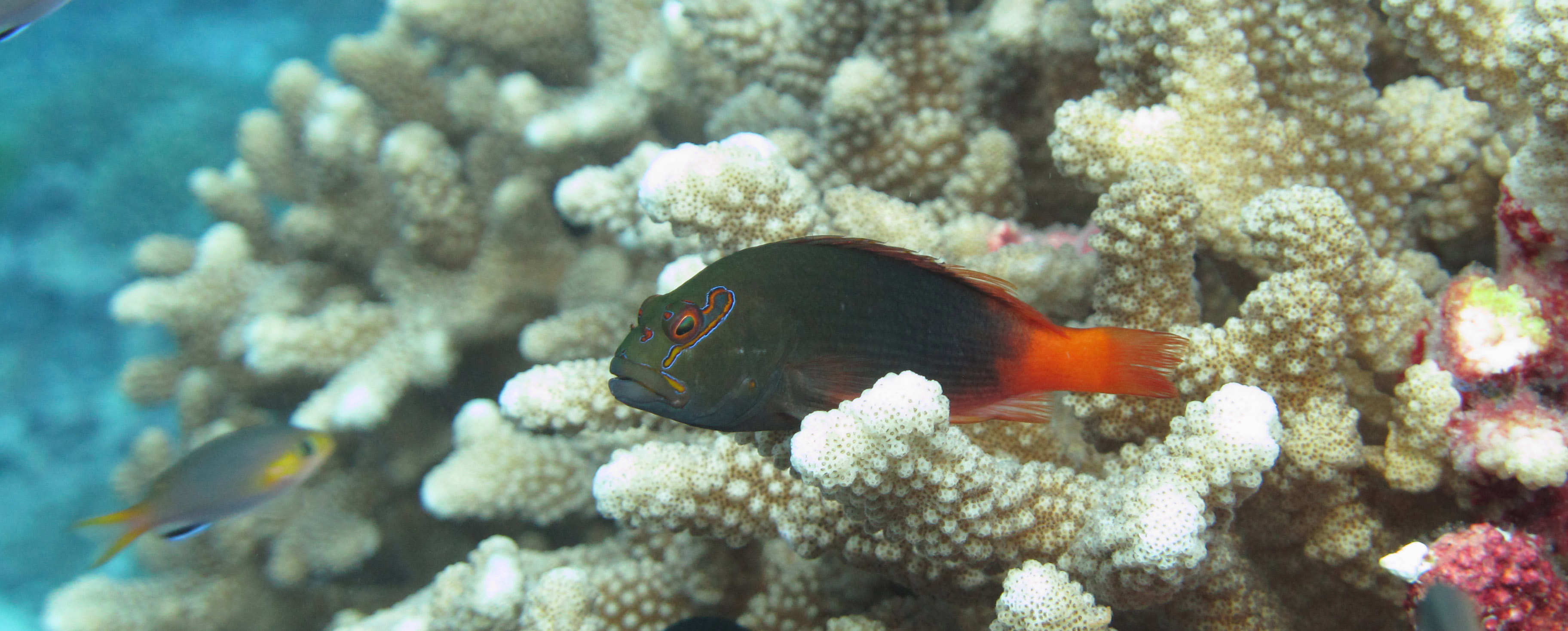Global S&T Development Trend Analysis Platform of Resources and Environment
| Diet Diversity: Hawkfish Species Thrive on Remote Reefs Thanks to Food Preferences | |
| admin | |
| 2020-04-08 | |
| 发布年 | 2020 |
| 语种 | 英语 |
| 国家 | 美国 |
| 领域 | 资源环境 |
| 正文(英文) |  Arc-eye hawkfish on a reef in the South Pacific. PC: Brian Zgliczynski Researchers at Scripps Institution of Oceanography at UC San Diego and San Diego State University have answered a question that has puzzled them for years: how can so many species of hawkfish coexist in close proximity on the same reef? The answer may lie in their individual diets. Hawkfish are classic brightly-colored reef fish, existing throughout the tropical oceans. Many reef fish reach their greatest diversity in the Coral Triangle, a region encompassing a swath of ocean in the tropical Western Pacific. However, one genus of hawkfish – known as arc-eye hawkfish because of its distinguishing brightly colored eye features – has the most species in an unlikely place: the remote islands of the Republic of Kiribati and French Polynesia in the South Pacific. Of the four species found here (Paracirrhites nisus, P. xanthus, and P. bicolor, and P. arcatus), the first three are endemic to the Polynesian province, meaning they are found nowhere else. P. arcatus is however found throughout the tropical Pacific. The researchers were puzzled as to how such closely related species could exist together on the same coral reefs. “One of the things that has always fascinated people about coral reefs is their tremendous biodiversity,” said Beverly French, a PhD student at Scripps Oceanography and lead author. “It’s one of the puzzles in ecology: why are there so many different kinds of animals? How do they coexist? One of the ways they can do this is through partitioning resources.” By analyzing their gut contents and microbiomes, French and colleagues found that these fish have different diets. The team collected hawkfish of the genus Paracirrhites – one of which has only been photographed and published once – and sequenced the contents in their stomachs. The findings were published April 8 in the journal Ecology and Evolution. The researchers conducted this study at sea, using next-generation sequencing to discover what each hawkfish was eating. These fish primarily eat crustaceans and other fish. By comparing stomach contents and gut microbiomes, the researchers found that the endemic species were eating a higher percentage of other fish species compared to P. arcatus. This trophic partitioning, meaning different food niches for each species, could explain how these three endemic hawkfish are able to coexist on South Pacific reefs. “The challenges in setting up a sequencing facility at sea during an expedition are unprecedented,” said Yan Wei Lim, a former graduate student at San Diego State University who set up the sequencer on the ship. “However, our goal to generate data in real time allowed us to look at preliminary data during the expedition to make sure we brought back valuable information. This is especially important when you are out in a field that is hard to get to, like the uninhabited Southern Line Islands.” Experimenting at sea in this manner attracted attention from renowned ichthyologist Jack Randall, who described and named Paracirrhites bicolor. French and colleagues shared their detailed photos and findings with him, bringing studies on these hawkfish full circle. This method of onboard experimentation and sequencing could open doors for studies in marine biology and ecology, helping scientists answer questions before returning to the lab. This is especially important for scientists who work in such remote places with elusive and barely understood organisms. “These species all have arcs over their eyes, they all sit on corals, and they all share the same habitat,” said Stuart Sandin, professor at Scripps Oceanography and Director of the Center for Marine Biodiversity and Conservation. “I’ve always wondered how they are different from one another, how they can exist as different species that are so similar in so many ways.” This study was supported by the National Science Foundation, San Diego State University, the Moore Family Foundation, the Gordon and Betty Moore Foundation, the Scripps Institution of Oceanography Director’s Office, and private donors. |
| URL | 查看原文 |
| 来源平台 | Scripps Institution of Oceanography |
| 文献类型 | 新闻 |
| 条目标识符 | http://119.78.100.173/C666/handle/2XK7JSWQ/232439 |
| 专题 | 资源环境科学 |
| 推荐引用方式 GB/T 7714 | admin. Diet Diversity: Hawkfish Species Thrive on Remote Reefs Thanks to Food Preferences. 2020. |
| 条目包含的文件 | 条目无相关文件。 | |||||
| 个性服务 |
| 推荐该条目 |
| 保存到收藏夹 |
| 查看访问统计 |
| 导出为Endnote文件 |
| 谷歌学术 |
| 谷歌学术中相似的文章 |
| [admin]的文章 |
| 百度学术 |
| 百度学术中相似的文章 |
| [admin]的文章 |
| 必应学术 |
| 必应学术中相似的文章 |
| [admin]的文章 |
| 相关权益政策 |
| 暂无数据 |
| 收藏/分享 |
除非特别说明,本系统中所有内容都受版权保护,并保留所有权利。
修改评论